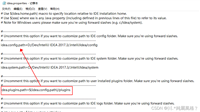引言
在企业级应用中,批处理任务是不可或缺的一部分。它们通常用于处理大量数据,如数据迁移、数据清洗、生成报告等。spring batch是spring框架的一部分,专为批处理任务设计,提供了简化的配置和强大的功能。本文将介绍如何使用spring batch与springboot结合,构建和管理批处理任务。
项目初始化
首先,我们需要创建一个springboot项目,并添加spring batch相关的依赖项。可以通过spring initializr快速生成项目。
添加依赖
在pom.xml中添加以下依赖:
<dependency>
<groupid>org.springframework.boot</groupid>
<artifactid>spring-boot-starter-batch</artifactid>
</dependency>
<dependency>
<groupid>org.springframework.boot</groupid>
<artifactid>spring-boot-starter-data-jpa</artifactid>
</dependency>
<dependency>
<groupid>org.hsqldb</groupid>
<artifactid>hsqldb</artifactid>
<scope>runtime</scope>
</dependency>
配置spring batch
基本配置
spring batch需要一个数据库来存储批处理的元数据。我们可以使用hsqldb作为内存数据库。配置文件application.properties:
spring.datasource.url=jdbc:hsqldb:mem:testdb spring.datasource.driverclassname=org.hsqldb.jdbc.jdbcdriver spring.datasource.username=sa spring.datasource.password= spring.batch.initialize-schema=always
创建批处理任务
一个典型的spring batch任务包括三个主要部分:itemreader、itemprocessor和itemwriter。
- itemreader:读取数据的接口。
- itemprocessor:处理数据的接口。
- itemwriter:写数据的接口。
创建示例实体类
创建一个示例实体类,用于演示批处理操作:
import javax.persistence.entity;
import javax.persistence.generatedvalue;
import javax.persistence.generationtype;
import javax.persistence.id;
@entity
public class person {
@id
@generatedvalue(strategy = generationtype.identity)
private long id;
private string firstname;
private string lastname;
// getters and setters
}
创建itemreader
我们将使用一个简单的flatfileitemreader从csv文件中读取数据:
import org.springframework.batch.item.file.flatfileitemreader;
import org.springframework.batch.item.file.builder.flatfileitemreaderbuilder;
import org.springframework.batch.item.file.mapping.beanwrapperfieldsetmapper;
import org.springframework.batch.item.file.mapping.defaultlinemapper;
import org.springframework.batch.item.file.mapping.delimitedlinetokenizer;
import org.springframework.context.annotation.bean;
import org.springframework.context.annotation.configuration;
import org.springframework.core.io.classpathresource;
@configuration
public class batchconfiguration {
@bean
public flatfileitemreader<person> reader() {
return new flatfileitemreaderbuilder<person>()
.name("personitemreader")
.resource(new classpathresource("sample-data.csv"))
.delimited()
.names(new string[]{"firstname", "lastname"})
.fieldsetmapper(new beanwrapperfieldsetmapper<person>() {{
settargettype(person.class);
}})
.build();
}
}
创建itemprocessor
创建一个简单的itemprocessor,将读取的数据进行处理:
import org.springframework.batch.item.itemprocessor;
import org.springframework.stereotype.component;
@component
public class personitemprocessor implements itemprocessor<person, person> {
@override
public person process(person person) throws exception {
final string firstname = person.getfirstname().touppercase();
final string lastname = person.getlastname().touppercase();
final person transformedperson = new person();
transformedperson.setfirstname(firstname);
transformedperson.setlastname(lastname);
return transformedperson;
}
}
创建itemwriter
我们将使用一个简单的jdbcbatchitemwriter将处理后的数据写入数据库:
import org.springframework.batch.item.database.beanpropertyitemsqlparametersourceprovider;
import org.springframework.batch.item.database.jdbcbatchitemwriter;
import org.springframework.batch.item.database.builder.jdbcbatchitemwriterbuilder;
import org.springframework.context.annotation.bean;
import org.springframework.jdbc.core.namedparam.namedparameterjdbctemplate;
@configuration
public class batchconfiguration {
@bean
public jdbcbatchitemwriter<person> writer(namedparameterjdbctemplate jdbctemplate) {
return new jdbcbatchitemwriterbuilder<person>()
.itemsqlparametersourceprovider(new beanpropertyitemsqlparametersourceprovider<>())
.sql("insert into person (first_name, last_name) values (:firstname, :lastname)")
.datasource(jdbctemplate.getjdbctemplate().getdatasource())
.build();
}
}
配置job和step
一个job由多个step组成,每个step包含一个itemreader、itemprocessor和itemwriter。
import org.springframework.batch.core.job;
import org.springframework.batch.core.step;
import org.springframework.batch.core.configuration.annotation.enablebatchprocessing;
import org.springframework.batch.core.configuration.annotation.jobbuilderfactory;
import org.springframework.batch.core.configuration.annotation.stepbuilderfactory;
import org.springframework.beans.factory.annotation.autowired;
import org.springframework.context.annotation.bean;
import org.springframework.context.annotation.configuration;
@configuration
@enablebatchprocessing
public class batchconfiguration {
@autowired
public jobbuilderfactory jobbuilderfactory;
@autowired
public stepbuilderfactory stepbuilderfactory;
@bean
public job importuserjob(jobcompletionnotificationlistener listener, step step1) {
return jobbuilderfactory.get("importuserjob")
.listener(listener)
.flow(step1)
.end()
.build();
}
@bean
public step step1(jdbcbatchitemwriter<person> writer) {
return stepbuilderfactory.get("step1")
.<person, person>chunk(10)
.reader(reader())
.processor(processor())
.writer(writer)
.build();
}
}
监听job完成事件
创建一个监听器,用于监听job完成事件:
import org.springframework.batch.core.jobexecution;
import org.springframework.batch.core.jobexecutionlistener;
import org.springframework.stereotype.component;
@component
public class jobcompletionnotificationlistener implements jobexecutionlistener {
@override
public void beforejob(jobexecution jobexecution) {
system.out.println("job started");
}
@override
public void afterjob(jobexecution jobexecution) {
system.out.println("job ended");
}
}
测试与运行
创建一个简单的commandlinerunner,用于启动批处理任务:
import org.springframework.batch.core.job;
import org.springframework.batch.core.launch.joblauncher;
import org.springframework.beans.factory.annotation.autowired;
import org.springframework.boot.commandlinerunner;
import org.springframework.boot.springapplication;
import org.springframework.boot.autoconfigure.springbootapplication;
@springbootapplication
public class batchapplication implements commandlinerunner {
@autowired
private joblauncher joblauncher;
@autowired
private job job;
public static void main(string[] args) {
springapplication.run(batchapplication.class, args);
}
@override
public void run(string... args) throws exception {
joblauncher.run(job, new jobparameters());
}
}
在完成配置后,可以运行应用程序,并检查控制台输出和数据库中的数据,确保批处理任务正常运行。
扩展功能
在基本的批处理任务基础上,可以进一步扩展功能,使其更加完善和实用。例如:
- 多步骤批处理:一个job可以包含多个step,每个step可以有不同的itemreader、itemprocessor和itemwriter。
- 并行处理:通过配置多个线程或分布式处理,提升批处理任务的性能。
- 错误处理和重试:配置错误处理和重试机制,提高批处理任务的可靠性。
- 数据验证:在处理数据前进行数据验证,确保数据的正确性。
多步骤批处理
@bean
public job multistepjob(jobcompletionnotificationlistener listener, step step1, step step2) {
return jobbuilderfactory.get("multistepjob")
.listener(listener)
.start(step1)
.next(step2)
.end()
.build();
}
@bean
public step step2(jdbcbatchitemwriter<person> writer) {
return stepbuilderfactory.get("step2")
.<person, person>chunk(10)
.reader(reader())
.processor(processor())
.writer(writer)
.build();
}
并行处理
可以通过配置多个线程来实现并行处理:
@bean
public step step1(jdbcbatchitemwriter<person> writer) {
return stepbuilderfactory.get("step1")
.<person, person>chunk(10)
.reader(reader())
.processor(processor())
.writer(writer)
.taskexecutor(taskexecutor())
.build();
}
@bean
public taskexecutor taskexecutor() {
simpleasynctaskexecutor taskexecutor = new simpleasynctaskexecutor();
taskexecutor.setconcurrencylimit(10);
return taskexecutor;
}
结论
通过本文的介绍,我们了解了如何使用spring batch与springboot结合,构建和管理批处理任务。从项目初始化、配置spring batch、实现itemreader、itemprocessor和itemwriter,到配置job和step,spring batch提供了一系列强大的工具和框架,帮助开发者高效地实现批处理任务。通过合理利用这些工具和框架,开发者可以构建出高性能、可靠且易维护的批处理系统。希望这篇文章能够帮助开发者更好地理解和使用spring batch,在实际项目中实现批处理任务的目标。
以上就是使用spring batch实现批处理任务的实例的详细内容,更多关于spring batch批处理任务的资料请关注代码网其它相关文章!




发表评论